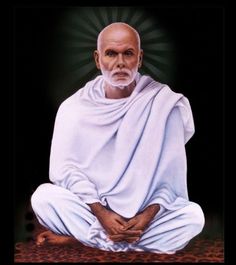
SREENARAYANAGURU

Sreenarayanaguru was born on 28 th August, 1856 (M.C. 14 th Chingam, 1031) in Vayalvaram family at Chempazhanthi, a village six miles north of Thiruvananthapuram. The male members of Vayalvarath house were well-known as Ayurvedic Physicians, Astrologers and Sanskrit Scholars. Guru’s father, Madan Asan, was a school teacher and his maternal uncle Krishnan Vaidyar was an Ayurvedic Physician. He inherited considerable cultural and social status which made him an ‘exception’ within the general social hierarchy. With this intellectual inheritance and cultural background, Narayana Guru possessed a mind that combined brilliance and incisiveness in finely balanced proportions. During childhood days, he revealed his innate nature by reacting in his own naughty way to affairs related to religious, ritual and caste sensibilities. Usual childish pranks were absent in Nanu. As a young boy, his unusual power of observation enabled him to study the prevailing social conditions. At home, he used to baffle every one with his unusual behavior. He would eat away all the offerings of the diety (fried paddy, jaggery, sugar, candy and other delicacies) before they were pronounced sacred. The elders tried to dissuade him but failed. To those who questioned him, he would retort, “God will be pleased, if I am pleased…” He kept himself away from other children and used to team up with Nature. He left home in search of Truth. He lived lonely in hill, cave or forest for years, unknown to men, performing ‘tapas’. He called himself a Guru or Teacher. He began to command an influence over people irrespective of caste, creed, status, educated and illiterate.
He was well versed in Malayalam, Sanskrit and Tamil. He was a philanthropist whose aim in life was to eliminate human sufferings. He established more than one hundred places of worship, which are day by day growing into centres of educational, philanthropic and economic activity. Sreenarayanaguru is revered as a seer, an exemplarary model of human compassion and a truly Jeevan Mukta Karma Yogi. Guru disapproved all caste and racial distinctions between man and man. He saw caste distinction causes unhappiness and unrest in society. Guru’s message to the young men, ran as follows: “Whatever may be the difference is men’s creeds, dress, language, etc – because they all belong to the same kind of creation, there is no harm at all in their dining together or having marital relations with one another.” On the wall of the consecrated temple at Aruvippuram, Guru inscribed the divine proclamation of oneness of man based on the fundamental principle of the nonduality as: “This is the model abode where all men live in brotherhood devoid of dividing walls of caste or race or hatred of rival faith” – Actually, it is a nucleus of universal brotherhood of humanity without distinction of race, creed, caste or colour. This was Guru’s first act for inter – religious -tolerance, fraternization and the act against caste and priest-craft. Mahatma Gandhi came to Sivagiri, thrice where Guru finally settled,- while Swamiji was alive, Gandhiji came to Sivagiri on 12-3-1925 and stayed a day in the Asramom, and after Swamiji’s Samadhi twice . Acharya Vinobabhave visited Sivagiri in 1925 and proclaimed later that the Guru is an ‘Avathar’. He said, “Sreenarayanaguru is considered as one of the five or ten avathars that have appeared in India during the last 100 years. I had the opportunity to meet him in 1925 when I went to Kerala in connection with Vaikom Sathyagraha. In those days he was residing at Varkala. There I had talked to him for an hour or two. My humble respects to the memory of the great sage”.
He was well versed in Malayalam, Sanskrit and Tamil. He was a philanthropist whose aim in life was to eliminate human sufferings. He established more than one hundred places of worship, which are day by day growing into centres of educational, philanthropic and economic activity. Sreenarayanaguru is revered as a seer, an exemplarary model of human compassion and a truly Jeevan Mukta Karma Yogi. Guru disapproved all caste and racial distinctions between man and man. He saw caste distinction causes unhappiness and unrest in society. Guru’s message to the young men, ran as follows: “Whatever may be the difference is men’s creeds, dress, language, etc – because they all belong to the same kind of creation, there is no harm at all in their dining together or having marital relations with one another.” On the wall of the consecrated temple at Aruvippuram, Guru inscribed the divine proclamation of oneness of man based on the fundamental principle of the nonduality as: “This is the model abode where all men live in brotherhood devoid of dividing walls of caste or race or hatred of rival faith” – Actually, it is a nucleus of universal brotherhood of humanity without distinction of race, creed, caste or colour. This was Guru’s first act for inter – religious -tolerance, fraternization and the act against caste and priest-craft. Mahatma Gandhi came to Sivagiri, thrice where Guru finally settled,- while Swamiji was alive, Gandhiji came to Sivagiri on 12-3-1925 and stayed a day in the Asramom, and after Swamiji’s Samadhi twice . Acharya Vinobabhave visited Sivagiri in 1925 and proclaimed later that the Guru is an ‘Avathar’. He said, “Sreenarayanaguru is considered as one of the five or ten avathars that have appeared in India during the last 100 years. I had the opportunity to meet him in 1925 when I went to Kerala in connection with Vaikom Sathyagraha. In those days he was residing at Varkala. There I had talked to him for an hour or two. My humble respects to the memory of the great sage”.
